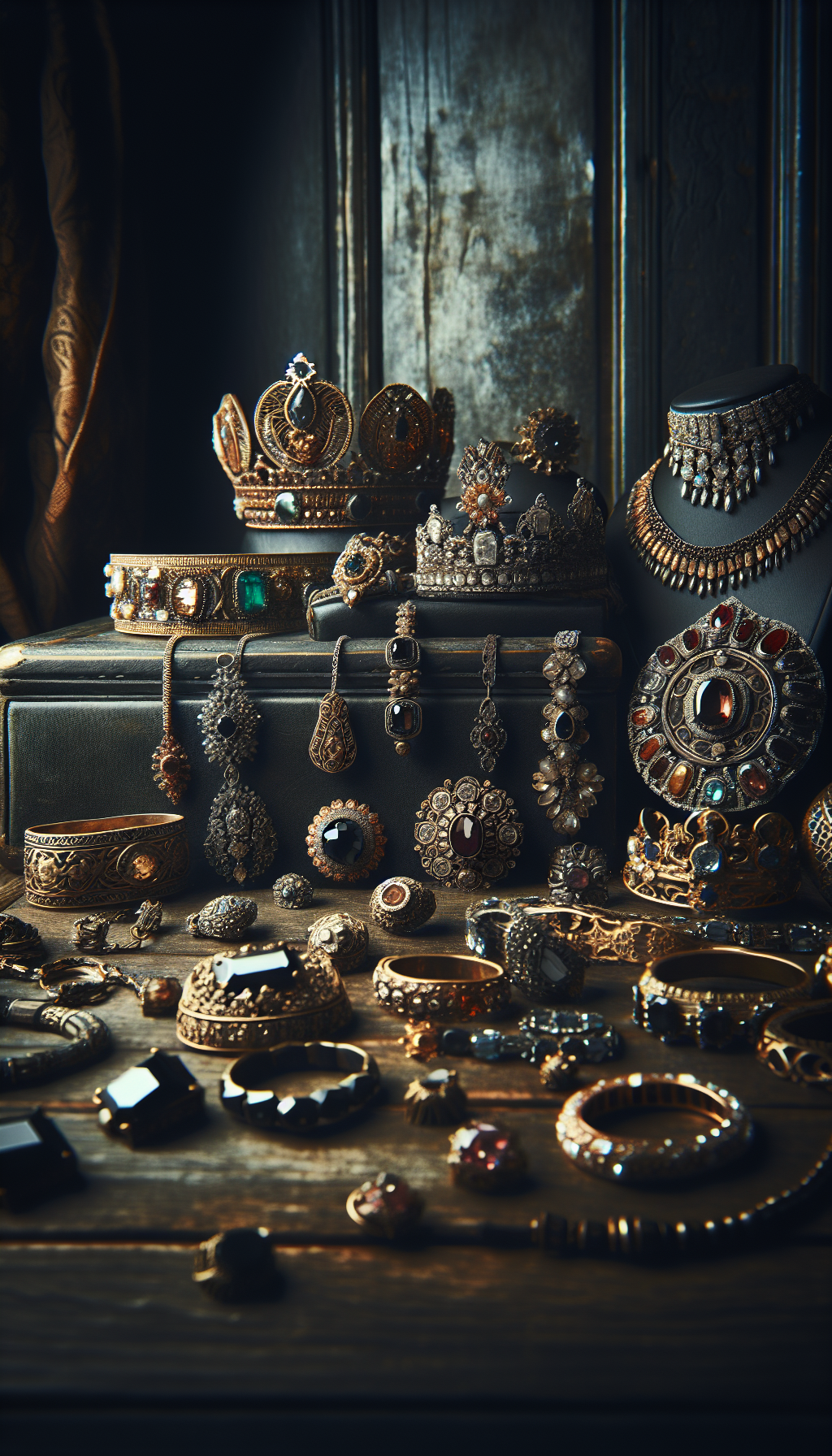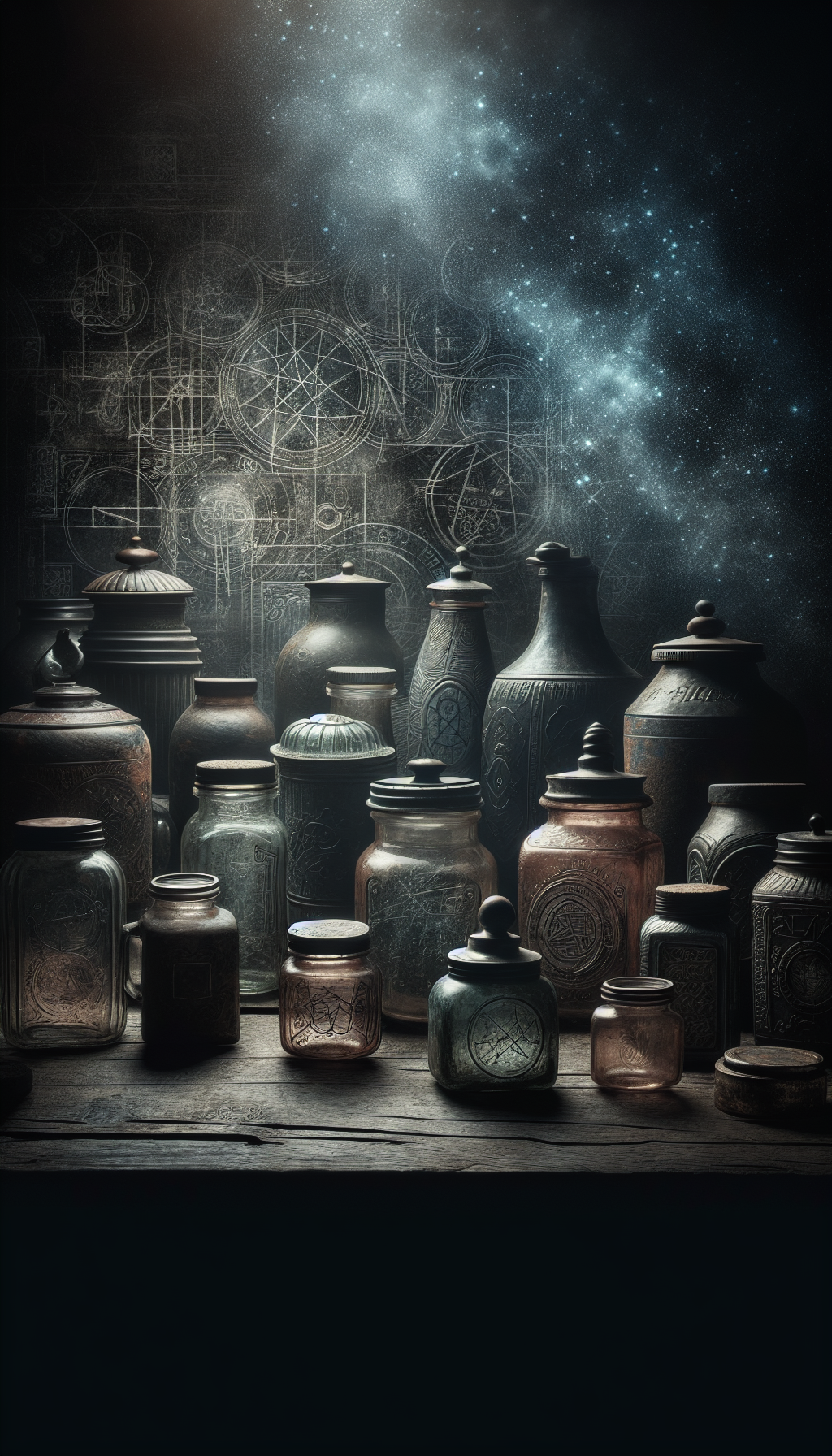Introduction to Native American Artifacts
Native American artifacts represent thousands of years of indigenous culture, craftsmanship, and history across North America. From delicately crafted arrowheads to intricately designed pottery, these artifacts provide invaluable insights into the lives, technologies, and artistic expressions of the original inhabitants of the continent.
For collectors, historians, and enthusiasts, properly identifying and understanding the value of these artifacts is essential—not only for their monetary worth but also for their historical and cultural significance. This comprehensive guide aims to provide you with the knowledge and resources needed to identify, authenticate, and determine the value of Native American artifacts responsibly and ethically.
Types of Native American Artifacts
Native American artifacts span a wide range of categories, each with unique characteristics that reflect specific tribal traditions, historical periods, and geographical regions. The main categories include:
Projectile Points (Arrowheads and Spear Points): Perhaps the most commonly found artifacts, these stone tools were crafted for hunting and warfare.
Stone Tools: Including scrapers, drills, knives, and axes used for everyday tasks.
Pottery: Clay vessels that vary significantly by region and time period, often featuring distinctive decorative patterns.
Basketry and Textiles: Woven items made from plant materials, demonstrating remarkable artistic skill.
Ceremonial Objects: Items used in religious and spiritual practices, including pipes, effigies, and ceremonial implements.
Beadwork and Jewelry: Decorative items that often incorporated natural materials like shells, stones, and bone.
Native American Artifact Market Statistics
Identifying Projectile Points and Arrowheads
Identifying projectile points requires attention to several key characteristics:
Material Composition
Most arrowheads were crafted from various types of stone, including:
- Flint and chert
- Obsidian
- Quartz
- Jasper
- Petrified wood
The type of stone used often correlates with geographic location, as indigenous people typically utilized materials available in their region.
Point Typology
Projectile points evolved over thousands of years, with distinct styles corresponding to different cultural periods:
Evolution of Native American Projectile Points
- 13,000-9,000 BCE
Paleo-Indian Period
The earliest arrowheads include Clovis, Folsom, and other fluted point styles. These are characterized by a distinctive groove or "flute" at the base to aid in hafting to a spear. - 9,000-1,000 BCE
Archaic Period
A wide variety of stemmed and notched points emerged, including Kirk, Savannah River, and Lamoka styles. These show more regional variation than earlier points. - 1,000 BCE-500 CE
Woodland Period
Smaller projectile points became common as bow and arrow technology replaced spear throwers. Madison, Jack's Reef, and Levanna points are typical of this era. - 500-1500 CE
Mississippian Period
Small triangular points dominated, with styles such as Madison and Cahokia. These small, thin points were designed specifically for use with bows.
Regional Variations
Point styles vary significantly by region due to different cultural traditions and available materials:
- Northeast: Triangular Levanna and Madison points are common in the Woodland Period
- Southeast: Distinctive styles include Dalton, Benton, and Savannah River
- Plains: Includes Plainview, Scottsbluff, and distinctive corner-notched varieties
- Southwest: Desert side-notched, Pinto Basin, and Gypsum Cave points are characteristic
- Northwest: Cascade, Windust, and Columbia Corner-Notched points are frequently found
For precise identification of arrowheads and projectile points, the Arrowhead Identification Database offers a comprehensive reference with over 1,000 point types and 60,000 photographs.
Authenticating Native American Artifacts
Authentication is perhaps the most critical aspect of artifact identification, as it determines both historical significance and monetary value. Here are key methods for authenticating Native American artifacts:
Surface Patination and Wear
Authentic ancient artifacts typically display:
- Natural patina that develops over centuries
- Mineral deposits consistent with long burial
- Weathering patterns that cannot be easily faked
- Authentic use-wear patterns and edge damage from practical use
Manufacturing Techniques
Examine how the artifact was made:
- Authentic stone tools show distinctive flaking patterns
- Pottery exhibits traditional construction methods like coil building or paddle-and-anvil techniques
- Evidence of hand tools rather than machine production
- Material composition consistent with pre-industrial technologies
Professional Authentication
For valuable or significant artifacts, professional authentication is recommended:
Authentication Process
Key steps in professional artifact authentication
- Physical examination by qualified archaeologists or specialized authenticators
- Microscopic analysis of surface wear patterns and patination
- Material analysis using scientific methods when appropriate
- Documentation of provenance and collection history
- Comparison with authenticated examples from museum collections
Organizations like the Indian Arrowhead and Artifact Authentication service provide professional certification services that can significantly enhance an artifact’s provenance and value.
Red Flags for Potential Forgeries
Be wary of artifacts that show:
- Unnaturally perfect condition
- Inconsistent patination or artificial aging
- Flaking patterns that don’t match traditional techniques
- Materials not historically available to the supposed makers
- Lack of provenance or collection history
- Prices that seem too good to be true
Determining the Value of Native American Artifacts
The market value of Native American artifacts is influenced by numerous factors:

Key Value Factors
- Rarity: Uncommon types, styles, or materials command premium prices
- Condition: Better-preserved artifacts are generally more valuable
- Provenance: Documented history of ownership increases value significantly
- Authenticity: Professionally authenticated items are worth more than similar unauthenticated pieces
- Completeness: Intact artifacts are more valuable than damaged examples
- Aesthetic Quality: Exceptional craftsmanship or artistic merit enhances value
- Cultural Significance: Items with important cultural or historical connections may command premiums
- Size: Unusually large examples often bring higher prices
Price Ranges for Native American Artifacts
Current market values for common artifact types (2023)
</tbody>
</table>
Recent Notable Sales
Notable recent sales highlight the significant values that exceptional Native American artifacts can achieve:
Recent Notable Artifact Auction Results
High-value Native American artifact sales in recent years
| Category | Price | Notes |
|---|---|---|
| Common Arrowheads (Woodland, Late Period) | $5-$50 | Common types in average condition |
| Exceptional Arrowheads (Perfect Condition) | $100-$500 | Pristine examples of more desirable types |
| Paleo-Indian Points (Clovis, Folsom) | $500-$5,000+ | Depending on condition, provenance, and quality |
| Stone Tools (Axes, Celts, Adzes) | $100-$1,000 | Based on size, condition, and craftsmanship |
| Pottery Vessels (Intact) | $1,000-$10,000+ | Varies greatly by culture, age, and decoration |
| Pottery Fragments | $10-$100 | Value depends on decoration and cultural origin |
| Ceremonial Objects | $1,000-$25,000+ | Rare items with significant cultural importance |
| Rare & Unusual Artifacts | $5,000-$100,000+ | Museum-quality pieces with exceptional provenance |
</tbody>
</table>

Legal and Ethical Considerations
Collecting Native American artifacts comes with significant legal and ethical responsibilities:
Legal Framework
Several federal laws govern Native American artifacts:
Native American Graves Protection and Repatriation Act (NAGPRA): Requires federal agencies and institutions to return certain Native American cultural items to descendants and tribes.
Archaeological Resources Protection Act (ARPA): Prohibits excavation or removal of archaeological resources from public or Native American lands without a permit.
National Historic Preservation Act: Provides for the protection of significant archaeological and historic sites.
State Laws: Many states have additional protections for archaeological resources, including artifacts on private property.
Key Legal Restrictions
- It is illegal to collect artifacts from public lands, including national parks, forests, and BLM land
- Artifacts found on tribal lands belong to the respective tribes
- Crossing state lines with illegally obtained artifacts may violate federal laws
- Importing or exporting artifacts may require permits and documentation
Ethical Considerations
Beyond legal requirements, collectors should consider:
- The cultural significance of artifacts to Native American communities
- The archaeological context lost when artifacts are removed from their original locations
- The importance of proper documentation and preservation
- The role of collectors in preserving rather than exploiting heritage
Responsible Collecting Practices
Ethical Collecting Guidelines
Best practices for responsible artifact collecting
- Only purchase from reputable dealers with clear provenance information
- Maintain detailed documentation of all artifacts in your collection
- Consider donating significant finds to museums or educational institutions
- Never disturb archaeological sites or remove artifacts from public lands
- Respect tribal sovereignty and cultural patrimony claims
- Share knowledge and contribute to public understanding of Native American heritage
Online Resources for Artifact Identification
Several online databases and resources can help with artifact identification:
Comprehensive Databases
Arrowhead Identification Database: The most extensive online resource for projectile point identification, with over 60,000 photographs and 1,000 point types categorized by shape, region, and alphabetical listing.
Peach State Archaeological Society: Offers detailed guides for identifying various artifact types, including projectile points, flaked stone tools, and ground stone tools.
ArtifactsGuide.com: A premier online source for prehistoric Indian artifacts from the Deep South, featuring extensive galleries and identification information.
Mobile Applications
Digital tools can assist with field identification:
Arrowhead ID: This app allows users to take photos of artifacts and receive identification information, making it a useful tool for collectors in the field.
Digital Field Guides: Several digital guides are available that provide comprehensive identification information for various regions and artifact types.
Authentication Services
For valuable artifacts, professional authentication is recommended:
Indian Arrowhead and Artifact Authentication: Provides professional certification services that can enhance an artifact’s provenance and value.
Authentic Artifact Collectors Association: Connects collectors with authentication experts and provides resources for proper identification.
Essential Resources for Artifact Collectors
Arrowhead Identification Database
Comprehensive database featuring over 60,000 photographs and 1,000 projectile point types, organized by shape, region, and name.
Peach State Archaeological Society
Detailed guides for identifying various Native American artifact types, including projectile points, tools, and pottery.
Artifacts Guide
Premier online source for genuine prehistoric Indian artifacts from the Deep South since 1998, with extensive galleries and authentication information.
Indian Arrowhead Authentication
Professional certification services that help establish provenance and enhance the value of Native American artifacts.
Heartland Artifacts
Educational resources on identifying and valuing different Native American artifacts while preserving cultural heritage.
Internet Archive: Paleo-Indian Artifacts Guide
Digital access to Lar Hothem's comprehensive identification and value guide for Paleo-Indian artifacts.
Building and Preserving a Collection
After acquiring artifacts, proper care and documentation are essential:
Documentation Best Practices
Maintain detailed records for each artifact:
- Acquisition Information: Date, source, price, and any provenance documentation
- Measurements and Weight: Precise dimensions and mass
- Material Composition: Stone type, clay composition, etc.
- Photographs: High-quality images from multiple angles
- Identification Details: Type, culture, approximate age
- Authentication: Any professional assessments or certifications
- Condition Notes: Document any damage, repairs, or special characteristics
Preservation Techniques
Proper storage helps maintain artifact condition:
- Climate Control: Store in stable temperature and humidity conditions
- Proper Display: Use UV-protected cases or drawers to prevent light damage
- Handling Protocols: Use cotton gloves when handling and avoid skin contact
- Archival Materials: Use acid-free papers and containers for storage
- Support Structures: Provide appropriate cushioning and support for fragile items
- Cataloging System: Maintain a logical organization and labeling system
Long-term Considerations
Think about the future of your collection:
- Insurance: Consider specialized insurance for valuable collections
- Estate Planning: Establish plans for your collection’s future
- Museum Donations: Consider donating significant pieces to appropriate institutions
- Educational Use: Share your collection through exhibits or educational programs
Common Questions About Native American Artifacts
Is there an app to identify Indian artifacts?
Yes, there are mobile applications designed to help identify Native American artifacts. One popular option is Arrowhead ID, which allows you to take a picture of an artifact and receive relevant information about it. The app provides details about various historical objects from different Native American traditions. However, while these apps can be helpful starting points, they should be used in conjunction with other reliable resources and, for valuable or significant items, professional authentication.
What Indian artifacts are worth the most money?
Clovis points from the Paleo-Indian period (dating back to the last Ice Age, approximately 13,000-11,000 BCE) are among the most valuable Native American artifacts. Only around 10,000 authentic Clovis points have ever been found, making them extremely rare. Particularly well-preserved examples or those with unusual characteristics can sell for tens of thousands of dollars, with the most exceptional specimens reaching six figures at auction.Other highly valuable artifacts include:
- Intact pottery vessels from the Anasazi, Mimbres, and other Southwestern cultures
- Rare ceremonial objects like bird stones and banner stones
- Effigy pipes and other ceremonial smoking implements
- Exceptional examples of beadwork and textile arts
- Stone sculptures and effigies
The value depends greatly on condition, provenance, rarity, and authentication status.
Why is it illegal to look for arrowheads?
It is illegal to collect artifacts, including arrowheads, on public lands in the United States. According to federal laws such as the Archaeological Resources Protection Act (ARPA), artifacts found on public lands—including national parks, forests, and BLM land—are protected resources that belong to the public.Collecting artifacts disrupts the archaeological record by removing items from their original context, which is crucial for scientific study. When artifacts are removed from their original location, valuable information about the past is permanently lost. This is why federal law prohibits collecting, excavating, or disturbing archaeological resources on public lands without proper permits, which are typically only issued for scientific research purposes.
However, the legality of collecting artifacts on private property varies by state and local laws. In some states, landowners may legally collect artifacts on their own property, while in others, certain types of sites and artifacts may still be protected.
How do I verify Native American artifacts?
Verifying the authenticity of Native American artifacts involves several steps:
Professional Authentication: Organizations like the Indian Artifact Grading Authority (IAGA) provide official certification services. These experts examine artifacts for authenticity based on material, craftsmanship, patination, and other factors.
Documentation and Provenance: Establishing a clear history of ownership and collection can significantly strengthen an artifact’s authenticity claim.
Material Analysis: For significant pieces, scientific testing methods such as lithic sourcing or dating techniques may be appropriate.
Comparative Analysis: Comparing the artifact with authenticated examples in museum collections or reference books can help identify genuine characteristics.
Surface Examination: Authentic artifacts typically display natural patination, wear patterns, and aging that are difficult to fake convincingly.
Having an official certificate from a recognized authentication service will ensure the preservation of the artifact’s provenance and historical information. The grade assigned, along with the classification, can be used to determine the approximate value and rarity of the artifact.
How can I find Native American artifacts legally?
There are several legal ways to find and collect Native American artifacts:
Purchase from Reputable Dealers: Buy from established dealers who can provide clear provenance information and authentication.
Attend Specialized Auctions: Legitimate auction houses offer authenticated Native American artifacts with proper documentation.
Private Property (with permission): In many states, you can search for artifacts on private property with the explicit permission of the landowner, though state laws vary.
Artifact Shows and Exhibitions: Attend shows where collectors and dealers gather to buy, sell, and trade artifacts legally.
Join Archaeological Societies: Many societies offer supervised field trips and excavations under professional guidance and with proper permits.
Estate Sales and Inheritance: Many collections enter the market through estate sales or are passed down through families.
Remember that regardless of how you acquire artifacts, it’s essential to maintain proper documentation of their provenance and to respect all applicable laws and ethical considerations.
What makes an arrowhead valuable to collectors?
Several factors determine an arrowhead's value to collectors:
Age: Generally, older points (like Paleo-Indian Clovis or Folsom points) are more valuable than more recent ones.
Rarity: Uncommon types, materials, or features command higher prices.
Condition: Complete, undamaged points are worth significantly more than broken or heavily reworked examples.
Size: Unusually large examples of a particular type often bring premium prices.
Material: Points made from attractive or exotic materials (like transparent quartz, obsidian, or colorful jasper) may be worth more than those from common materials.
Craftsmanship: Exceptionally well-made points with fine flaking demonstrate advanced skill and are more desirable.
Provenance: Documented history of where and when the point was found adds significant value.
Authentication: Professional certification confirming authenticity increases value substantially.
Special Features: Unusual characteristics like distinctive fluting, exceptional symmetry, or rare notching patterns can enhance value.
The most valuable arrowheads combine several of these factors—for example, a large, perfect condition Clovis point made from an attractive material, with documented provenance and professional authentication.
Conclusion
Native American artifacts represent a profound cultural heritage spanning thousands of years of indigenous history in North America. For collectors, historians, and enthusiasts, these artifacts offer a tangible connection to the past and an opportunity to preserve and learn from these remarkable cultural expressions.
Responsible collecting involves:
- Ethical acquisition through legitimate channels and with proper documentation
- Proper authentication to distinguish genuine artifacts from reproductions
- Appropriate conservation to preserve these items for future generations
- Respect for the cultural significance these objects hold for Native American communities
- Compliance with all legal requirements governing artifact collection and ownership
By combining knowledge, ethical awareness, and appreciation for the cultural context of these artifacts, collectors can contribute to the preservation of Native American heritage while building meaningful personal collections.
The resources highlighted in this guide provide valuable starting points for developing expertise in artifact identification and valuation. However, ongoing education, engagement with expert communities, and a commitment to responsible collecting practices are essential for anyone serious about Native American artifacts.
Get a Professional Appraisal
Unsure about your item’s value? Our certified experts provide fast, written appraisals you can trust.
- Expert report with photos and comps
- Fast turnaround
- Fixed, upfront pricing
No obligation. Secure upload.
| Item | Price | Date | Auction House |
|---|---|---|---|
| Clovis Point (Montana) | $276,000 | December 2022 | Heritage Auctions |
| Mississippian Stone Statue | $132,000 | May 2023 | Skinner Auctioneers |
| Anasazi Pottery Vessel | $94,500 | September 2022 | Bonhams |
| Great Lakes Stone Birdstone | $86,000 | January 2023 | Cowan's Auctions |
| Cumberland Point Collection (12 pieces) | $78,000 | November 2022 | Morphy Auctions |




